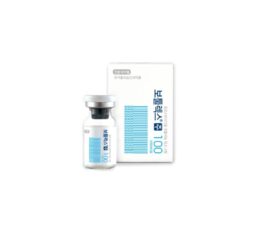The Evolution and Application of Botulinum Toxin in Cosmetic Dermatology
Botulinum toxin, commonly known by its trade names such as Botox®, Dysport®, and Xeomin®, has revolutionized the field of cosmetic dermatology. Originally used for medical purposes to treat conditions like muscle spasms and excessive sweating, botulinum toxin injections have become one of the most sought-after cosmetic procedures worldwide for reducing wrinkles and achieving a youthful appearance. This article explores the evolution, mechanism of action, and diverse applications of botulinum toxin in aesthetic medicine.

Botulinum toxin is a neurotoxic protein produced by the bacterium Clostridium botulinum. Its cosmetic use stems from its ability to temporarily paralyze muscle activity by blocking the release of acetylcholine, a neurotransmitter responsible for muscle contraction. amerinet-gpo.com By selectively targeting specific facial muscles, botulinum toxin injections can smooth out wrinkles and fine lines caused by repetitive facial expressions, such as frowning or squinting.
The popularity of botulinum toxin injections can be attributed to their effectiveness, safety profile, and minimal downtime. The procedure is quick, typically lasting 15 to 30 minutes, and requires no anesthesia. Patients can resume their daily activities immediately afterward, although they are advised to avoid strenuous exercise and excessive facial manipulation for the first 24 hours.
Botulinum toxin injections are commonly used to treat dynamic wrinkles, which are caused by muscle movement, including forehead lines, frown lines between the eyebrows (glabellar lines), and crow's feet around the eyes. Additionally, botulinum toxin can be used for other aesthetic purposes, such as lifting the eyebrows, reducing the appearance of a gummy smile, and slimming the jawline by relaxing the masseter muscles.
Furthermore, botulinum toxin injections have therapeutic benefits beyond cosmetic enhancement. They are used to treat medical conditions such as hyperhidrosis (excessive sweating), migraine headaches, and bruxism (teeth grinding). Additionally, botulinum toxin injections can provide relief for individuals with temporomandibular joint disorder (TMJ) by relaxing the jaw muscles and reducing jaw pain and tension.
The longevity of botulinum toxin injections varies depending on several factors, including the type of product used, the dosage administered, and individual factors such as metabolism and muscle activity. Generally, the effects of botulinum toxin injections last three to six months, after which repeat treatments are necessary to maintain results.
While botulinum toxin injections are considered safe when administered by a qualified healthcare professional, they do carry some risks and potential side effects. These may include bruising, swelling, temporary weakness or drooping of nearby muscles, and rarely, allergic reactions. Patients should seek treatment from a board-certified dermatologist or plastic surgeon with expertise in facial anatomy and injection techniques to minimize the risk of complications.
In conclusion, botulinum toxin injections have transformed the field of cosmetic dermatology by offering a safe, effective, and minimally invasive solution for reducing wrinkles and achieving a more youthful appearance. With their versatility in treating both aesthetic and medical conditions, botulinum toxin injections continue to be a valuable tool for enhancing patients' quality of life and self-confidence.
- Industry
- Art
- Causes
- Crafts
- Dance
- Drinks
- Film
- Fitness
- Food
- Jogos
- Gardening
- Health
- Início
- Literature
- Music
- Networking
- Outro
- Party
- Religion
- Shopping
- Sports
- Theater
- Wellness
- News


